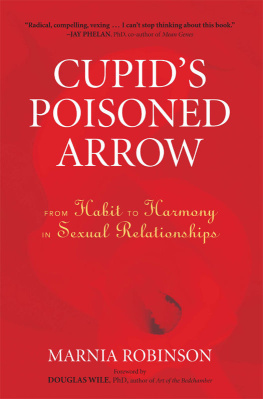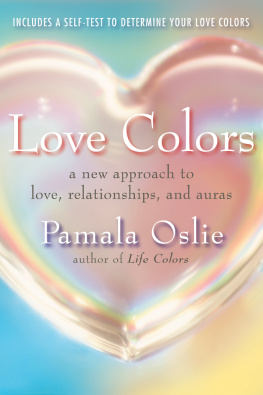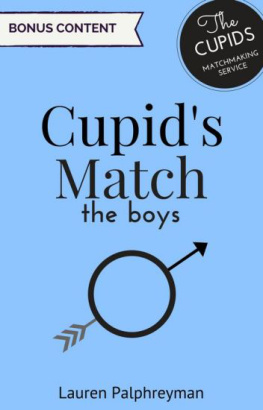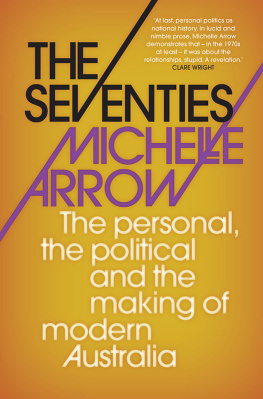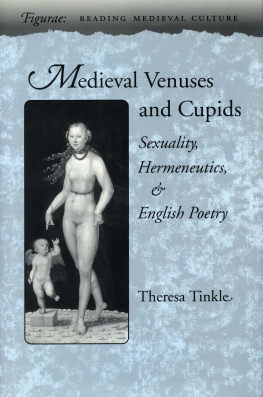Copyright 2009 by Marnia Robinson. Illustrations copyright 2009 by Patricia Somers. All rights reserved. No portion of this book, except for brief review, may be reproduced, stored in a retrieval system, or transmitted in any form or by any meanselectronic, mechanical, photocopying, recording, or otherwisewithout the written permission of the publisher. For information contact North Atlantic Books.
North Atlantic Books publications are available through most bookstores. For further information, call 800-733-3000 or visit our Web site at www.northatlanticbooks.com.
Although anyone may find the suggestions in this book useful and beneficial, they are not intended as a diagnosis, prescription, recommended treatment, or cure for any specific problem, whether medical, emotional, psychological, social, or spiritual. This book was written for educational purposes only and not designed to replace therapy or consultation with a qualified professional.
This book is lovingly dedicated to
Gary Bruce Wilson,
whose courage, insight, and open heart
brought it to life.
I N G RATITUDE
T his book could not have been compiled or published without the generous and dedicated efforts of many people over a fifteen-year period. For some reason, most of them prefer to remain anonymous. Nevertheless, there are a few bold people I would like to thank by name. Mary Sharpe has contributed countless insights, bits of relevant research, and practical suggestions for many years. She even returned to university to obtain a second advanced degree, in theology, at Cambridge in order to study and write about sexuality and the sacred. Her work led to many intriguing discoveries, some of which are in this book. Steve Coffin and Jay Moller have both shared hours of their precious time critiquing the text and asking shrewd, and sometimes awkward, questions, which strengthened it a great deal. Mari Petersens loyal encouragement and insights about attachment were invaluable. Augustin Masquilier voluntarily spent hours recreating, and teaching me how to manage, my Web site, which opened portals for some amazing bloggers. Their willingness to experiment with the concepts in this book and offer their own stories were precious giftsand an enjoyable experiment in oneness.
I have also been blessed with some wonderful male and female mentors in the form of professors, bosses, and close relatives. Their strong centers of gravity, healthy boundaries, and shrewd grasp of human nature have supported and sustained me when the path seemed steep. Finally, my husband, Gary Wilson, contributed the hours of careful study and related insights that made this materials key concepts accessible for the science-drenched West. He also supplied the loving yang energy that fueled the writing.
I am deeply indebted to this chain of enthusiasts, loved ones, and guardians, which stretches around the globe, with special links in Australia, Belgium, Chile, England, Germany, Italy, Sweden, Taiwan, and the United States.
C ONTENTS
F OREWORD
M arnia Robinsons book is the fulfillment of a dream I shared at the end of Art of the Bedchamber: that Asian sexual practices, developed under conditions of polygamy and proto-science, could be adapted for modern monogamy and gender equality. Asian male fantasies of achieving immortality by stealing female sexual essence and phobias of essence-stealing female fox fairies can now be explained by neurochemistry. But more than unraveling the mysteries of ancient Asian sexology, Robinson has employed a cinematographers mastery of montage to craft a dazzling panorama of intimate personal experience, anecdote, ancient wisdom, philosophy, psychology, and medicine. The books content richness will satisfy scholars and scientists in many fields, but its wit and style will rivet any thoughtful man or woman who has ever stopped to reflect upon the human sexual tragicomedy.
Like a thriller that reveals its climax at the beginning, Robinsons book leaves the reader intrigued by every twist and turn of autobiography and intellectual inquiry to discover what brought her to such a revolutionary conclusion. She does not bow down to the idols of ancient wisdom or mainstream scientific consensus, but stands courageously on the two feet of the truth of her own experience and the latest discoveries in neuroscience.
You may come to this book for advice on your sex life, but you will come away with something more like the Theory of Everything in human behavior. Robinson has brought so much humanity and humor to her quest that you may not even notice that she has skillfully used the most advanced scientific discoveries to salvage good old-fashioned romance.
Sex, avarice, and violence are the three two-edged swords of human evolution: how to tame sex without destroying love, how to tame avarice without destroying creativity, and how to tame violence without destroying courage have been the preoccupation of religion, politics, and philosophy from time immemorial. Somehow avarice and violence seem simple in comparison to sex, but Robinson has made, perhaps, the boldest and most thoroughgoing attempt to date. She aims to put your sex life on a diet, but like all good diets, it is not about eating less as much as eating smarter. The sciences and social sciences have polarized along a nature-nurture axis, but she has navigated a middle path between biological determinism and cultural construction to return to the Epicurean vision of using reason to refine pleasure.
Douglas Wile, PhD, author of Art of the
Bedchamber: The Chinese Sexual Yoga Classics
Including Womens Solo Meditation Texts
P REFACE
M y parents and my grandparents stayed married until death parted them. I, on the other hand, couldnt keep my relationships going for more than a few years, and I wasnt alone. The marriages of all three friends whose weddings I attended as bridesmaid also ended in divorce. Why? Sociologist Kelly Musick says its due to womens financial independence. Whats keeping people together is their love and commitment for each other, and thats fragile.
Why were love and commitment becoming so fragile? Exactly how could the fact that I earned my own living cause disharmony? That made no sense. I was too much of a romantic to consider the possibility that sexual unions had always been fragile, and that womens increased financial independence simply enabled partners to move on with greater ease.
Instead, I tried all the familiar recommendations for healing disharmony in intimate relationships: improved communication, finding a more ideal mate, more passion, loving my inner child, negotiation, and so forth. Yet these remedies did not arrest relationship deterioration when trouble started. Eventually I realized that they sometimes address only

